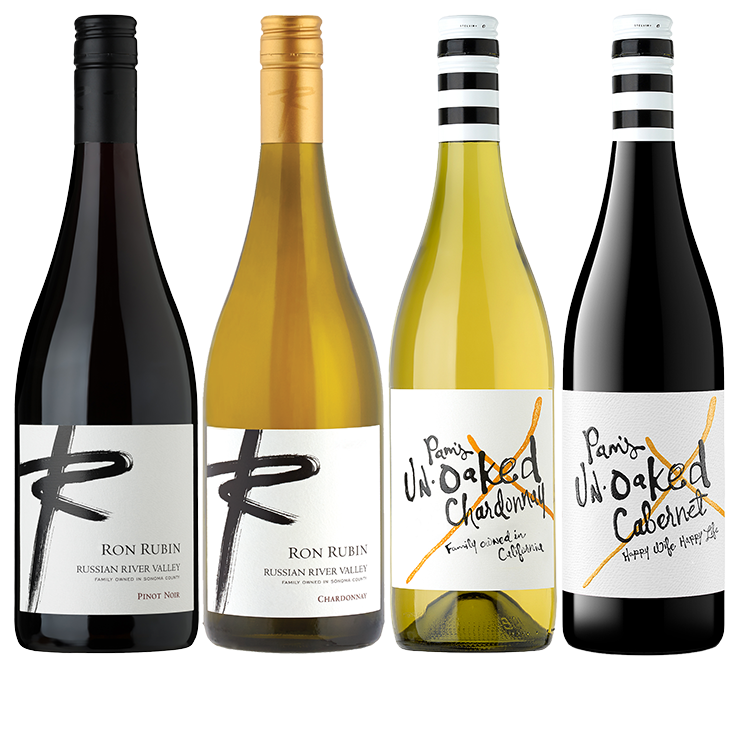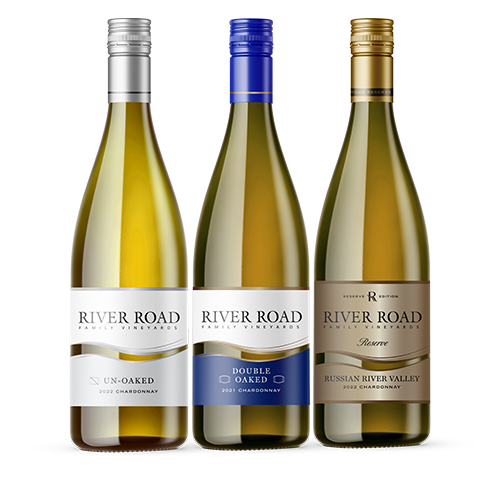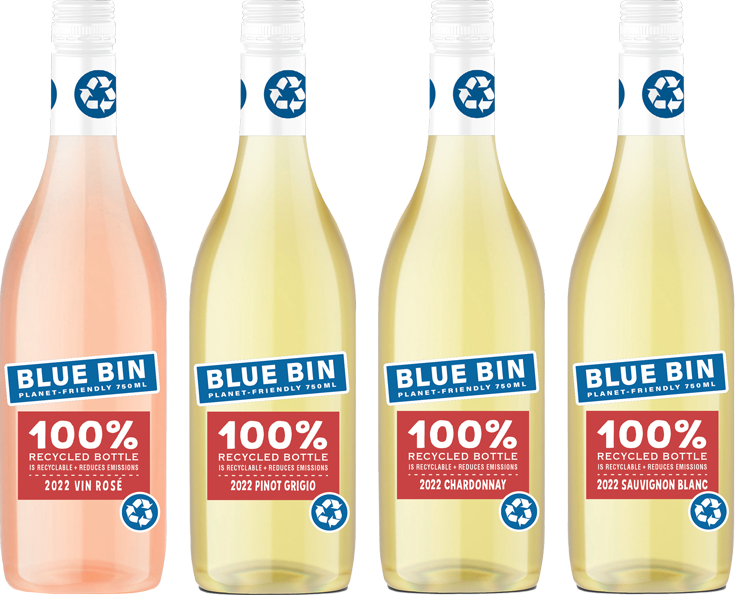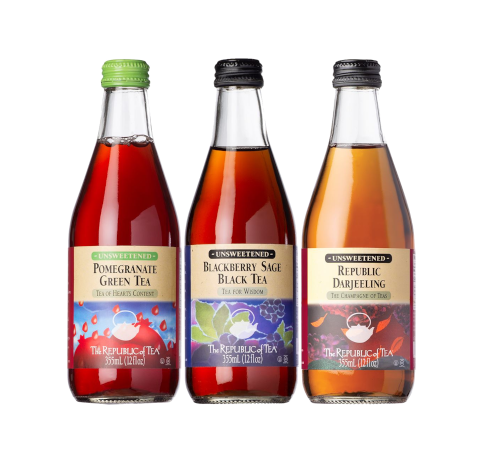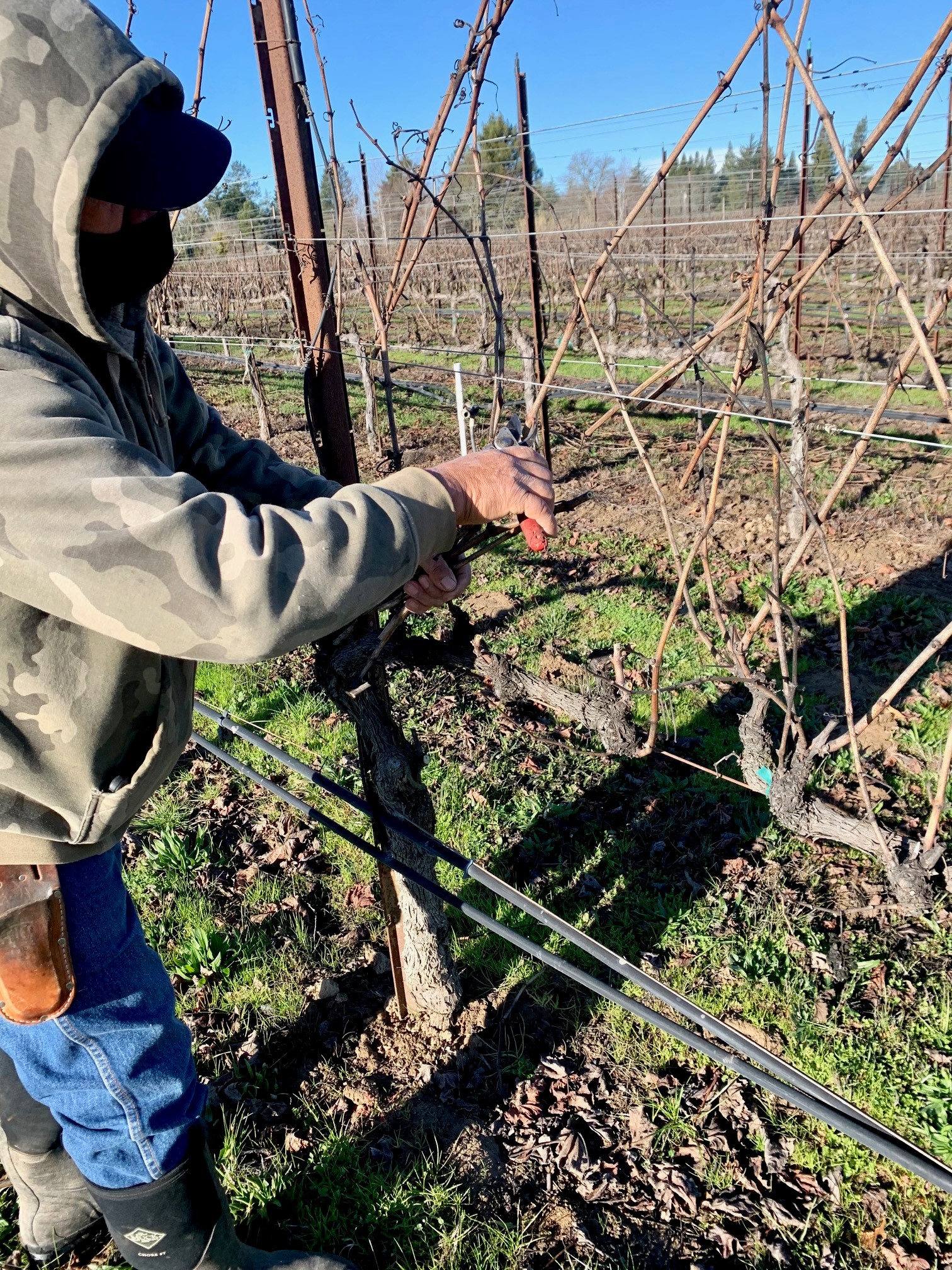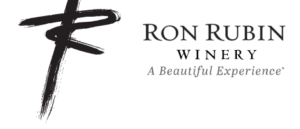VINEYARD UPDATE – THE PRUNING BEGINS
The vineyard is in a deep dormant state. We have had an atypical January with very little rain up until the final days of the month. Finally, the first big rainstorm came through the area on January 26th, bringing some much-needed precipitation! The dry days allowed us to make necessary progress pruning the vines. The start time of pruning varies slightly each year. This year, pruning began on January 25th and will last several weeks. Pruning is one of the most important stages of vineyard management. It has a direct impact on wine quality and sets the stage for the upcoming vintage. Our Vineyard Manager, Alvaro Zamora taps into his more than 30 years of experience in the vineyard to read each vine and prune it to reach our goal of bringing the vines into balance for the upcoming growing season. A balanced vine will remain healthy and productive for many years to come!
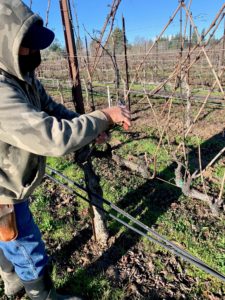
Alvaro pruning the vineyard rows by hand
There are a lot of factors that go into making pruning decisions. It starts from a broad view of historic yields from each block to overall block health, then finally narrows down to each individual vine. Throughout the prior growing season Alvaro has marked weaker vines with tape. Once the vine has dropped all its leaves in the fall, he will look at the thickness of the woody canes as the main indicator of the vine’s prior vigor and health. A healthy vine will have mostly thick canes where a weaker vine will have shoots that are short and thin. If they are thinner than a pencil, then we consider them “thin”.
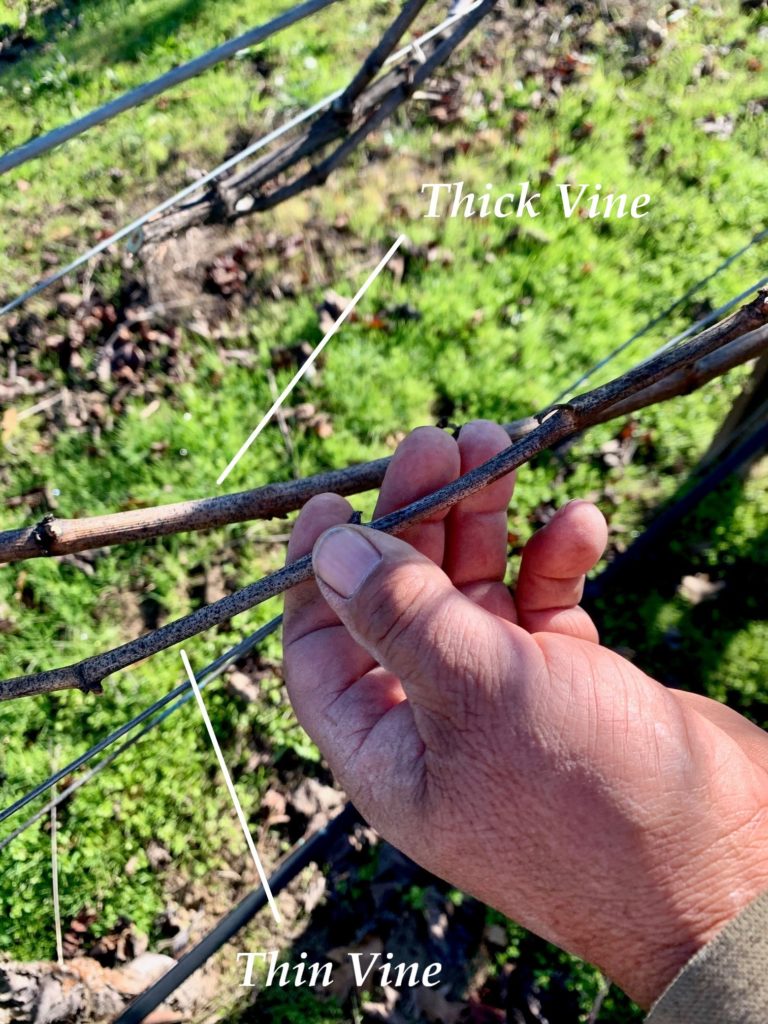
An example of thin vs. thick vines
If a vine has thin shoots or shows signs of stress this indicates to Alvaro and his team to prune to fewer buds. This exercise limits the number of grape clusters on the vine, allowing the vine to exert more energy into the root system bringing it back into balance in the upcoming season. Conversely if the vine has thick healthy canes Alvaro will leave more buds which allows more grape clusters to develop on the vine.
Over the past few years, we have shifted how we prune the vines. We moved from “spur” pruning to close to the entirety of the vineyard being “cane” pruned. The essential benefits to “cane” pruning are as follows:
- Removes permanent cordon arms, reducing the likelihood of vine vascular disease.
- “Cane” pruning gives more flexibility in managing cane length, bud count, and vine yield on each individual vine.
- Increase of overall quality from the benefits listed above.
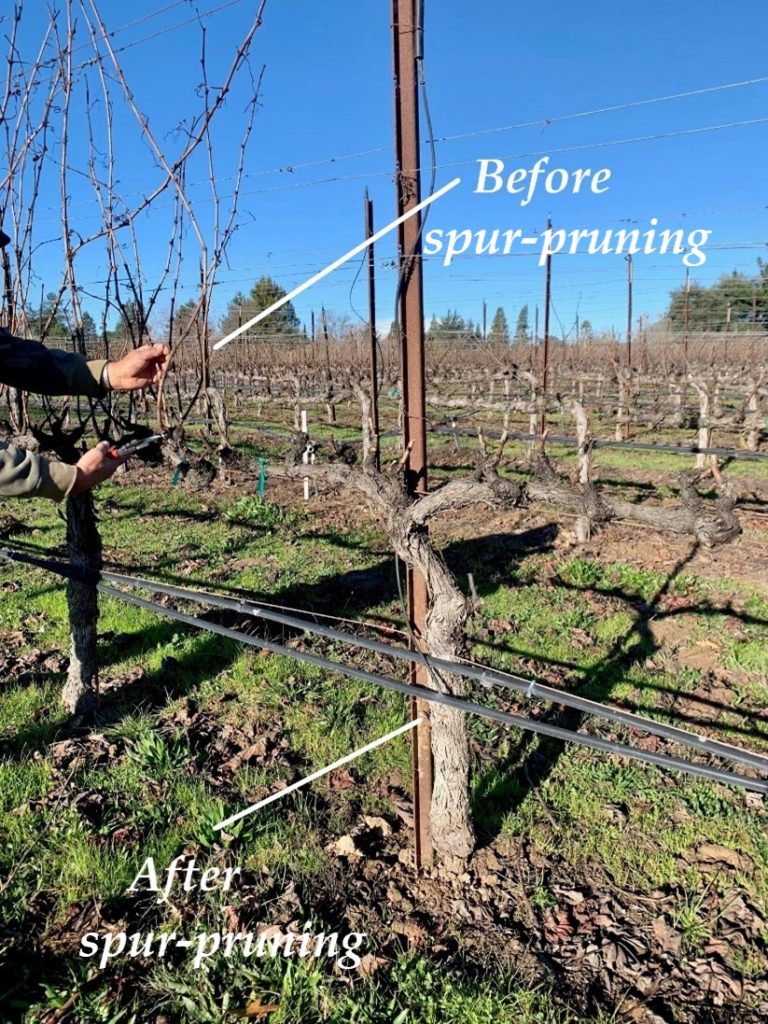
Before and after spur-pruned, “T”-shaped vines
Spur-pruned vines look like a classic grape vine. They are cordon trained which gives them that “T” shape when they are dormant or have no leaves on them. All the “permanent” wood has been trained over many years into that shape. The horizontal arms of the “T” are the “cordons” which have spurs spaced every six inches or so. It is from the spurs where the vines and grape clusters grow every season.
Cane- pruned vines are not trained in a “T” shape. They are one vine trunk and a head. They do not have the “permanent” cordons on either side of the head. Instead canes or vines growing from the head from the previous year’s growth are left during pruning and then laid down onto the “training” wires. The new growth each season comes from the buds on those canes. After the growing season is complete, those one-year-old canes are pruned back and strong, healthy canes are laid down to take their place.
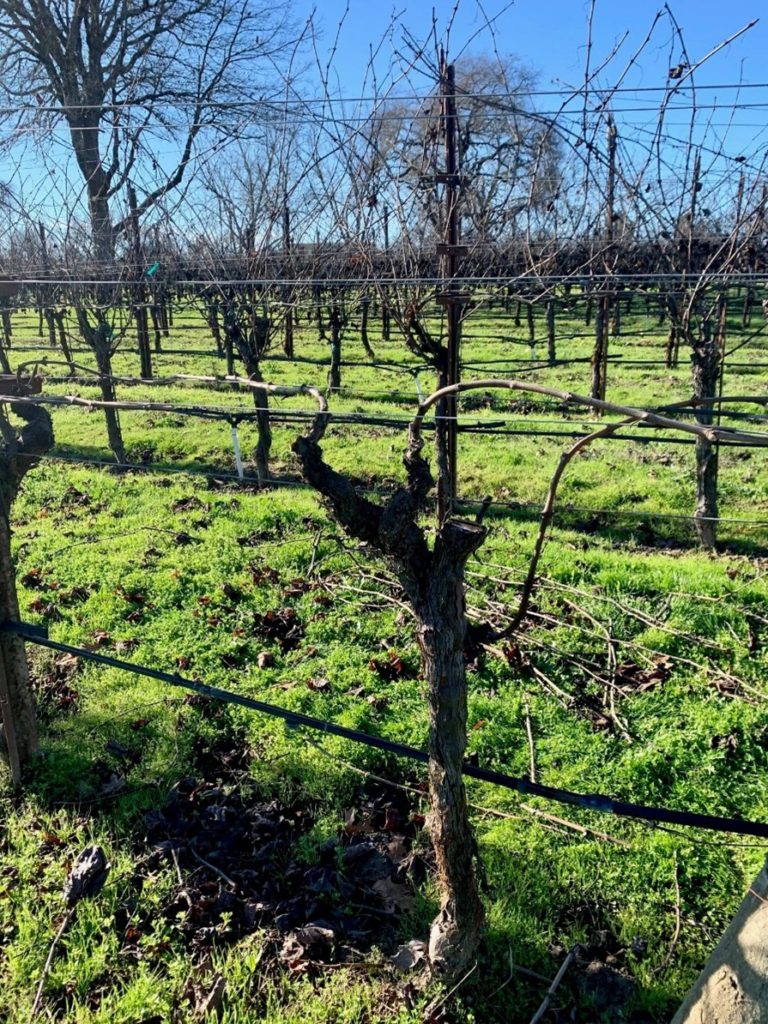
Cane-pruned vine
Alvaro’s mastery of vine pruning is apparent year after year here at Ron Rubin Winery. His decades of experience help to guide us in achieving balance between crop yield and canopy growth. While pruning is just one part of the winemaking equation, a balanced vineyard ultimately produces the best quality wines.
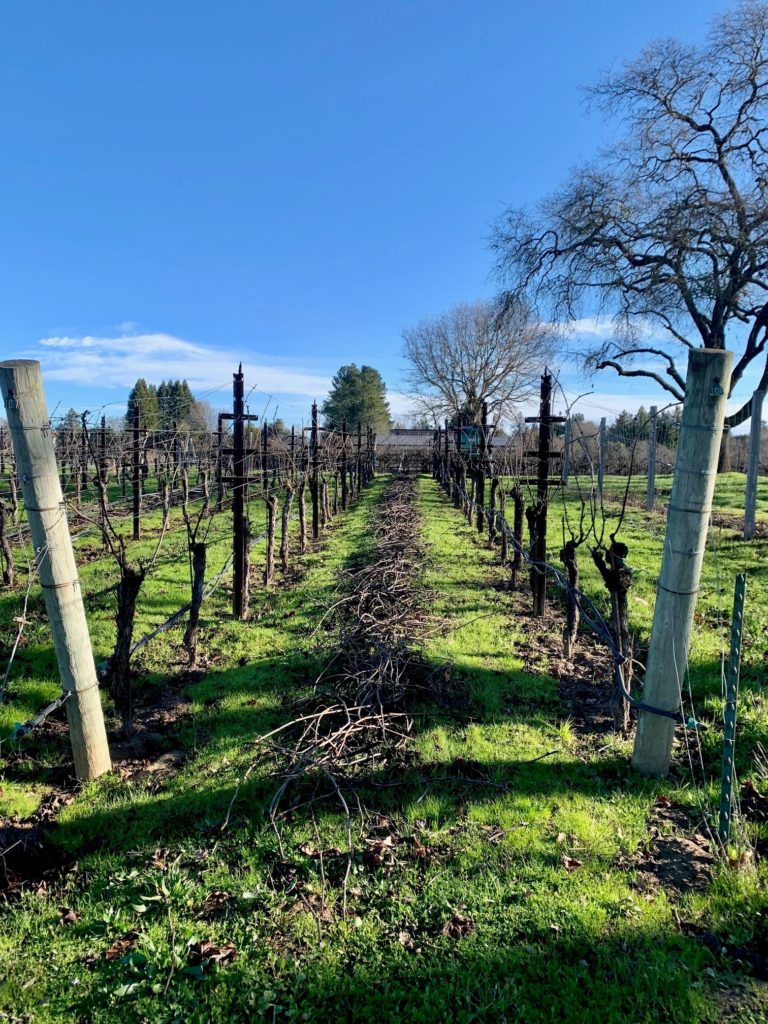
A completed row of pruned vines on January 25th, 2021
On behalf of the entire team at Ron Rubin Winery, we wish you all continued good health!
Be Well!

